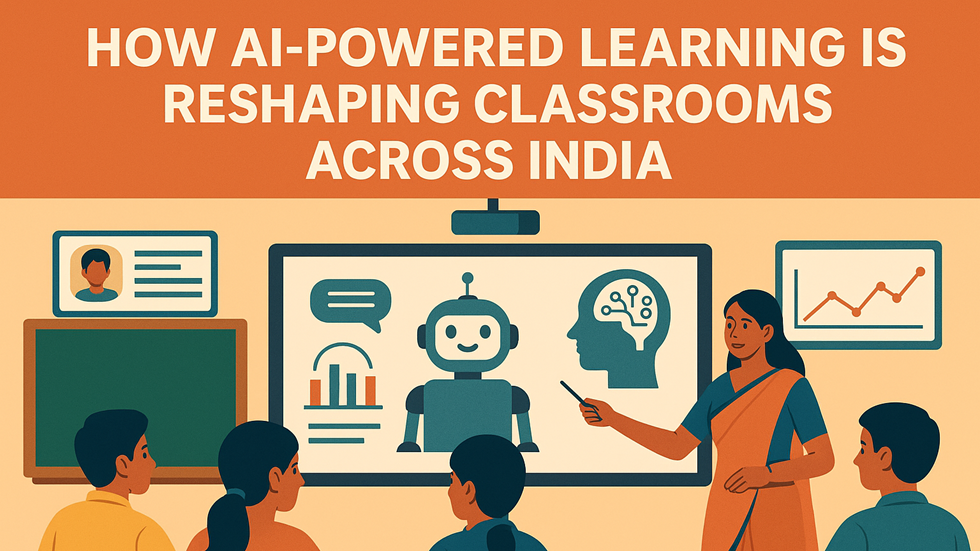
How AI-Powered Learning Is Reshaping Classrooms Across India – EdTechReview
Introduction: The Rise of Smart Classrooms
India’s education landscape is evolving faster than ever. From digital boards to personalized dashboards, artificial intelligence (AI) is no longer a futuristic concept — it’s a classroom reality. Schools and educators are discovering that AI tools can simplify teaching, personalize learning, and give students the confidence to explore their full potential.
But what does this transformation truly look like in action? Let’s explore how AI is redefining the way Indian students learn and teachers teach.
Personalized Learning: Every Student Learns Differently
One of AI’s biggest impacts is its ability to adapt lessons to individual learning speeds and styles. Traditional classrooms often struggle to balance fast and slow learners, but AI-driven platforms now analyze performance data to adjust the difficulty, pace, and type of content each student receives.
Teachers, in turn, get real-time dashboards highlighting which students need more help — making learning more human, not less.
Empowering Teachers, Not Replacing Them
AI is not about replacing teachers; it’s about helping them teach smarter. Automated assessments, instant grading, and progress analytics save valuable time that can be redirected toward creative and critical thinking activities.
By managing repetitive tasks, teachers gain the freedom to mentor, motivate, and innovate — strengthening the student-teacher relationship.
From Data to Insight: Smarter Academic Decisions
AI transforms academic data into actionable insights. School leaders can now track attendance, performance, and engagement patterns across classes and subjects. These insights help identify learning gaps early, plan targeted interventions, and improve school-wide results.
The focus is shifting from reactive to proactive education management.
AI for Exam Preparation: Confidence Through Practice
Beyond classrooms, AI is empowering competitive exam aspirants with data-driven preparation tools. From adaptive practice tests to instant feedback, technology ensures that students focus on improvement, not memorization.
It’s a shift from “How many hours you study” to “How effectively you learn.”
Bridging Urban-Rural Learning Gaps
One of AI’s most promising contributions is its potential to bring quality education to every corner of India. With affordable internet access and mobile-first learning platforms, even small-town schools can now offer top-tier learning experiences once limited to urban centers.
This democratization of education is where the true power of technology lies — equal opportunity for every learner.
The Road Ahead: Human + AI = The Future of Learning
As AI continues to evolve, it’s essential to maintain a balance — keeping human empathy at the heart of technological advancement.
The future of learning in India will not be purely digital or purely traditional. It will be a harmonious blend of human intelligence and artificial intelligence, building classrooms that are smart, inclusive, and emotionally aware.
Conclusion
AI in education is not about replacing blackboards with screens; it’s about creating smarter ways to teach, learn, and grow.
India stands at the forefront of this transformation — led by passionate educators, visionary institutions, and technology innovators working together to redefine the classroom of tomorrow.
Source link



